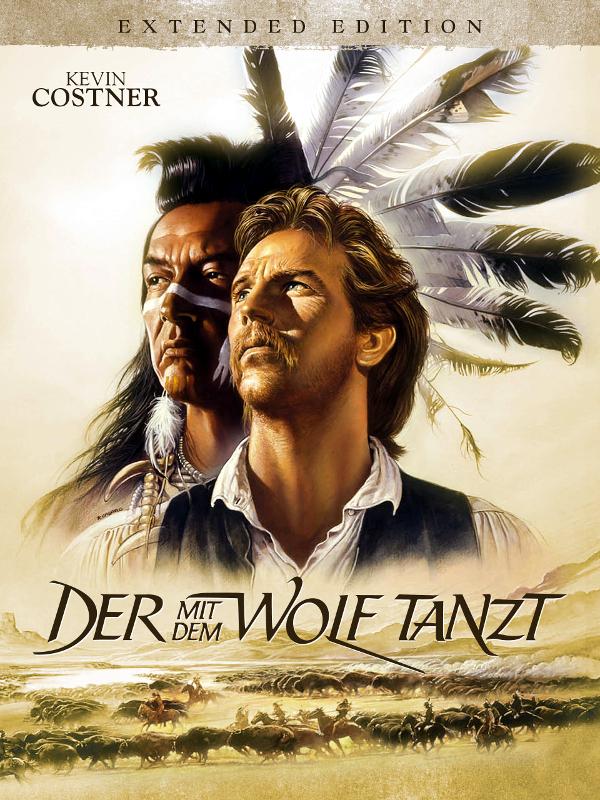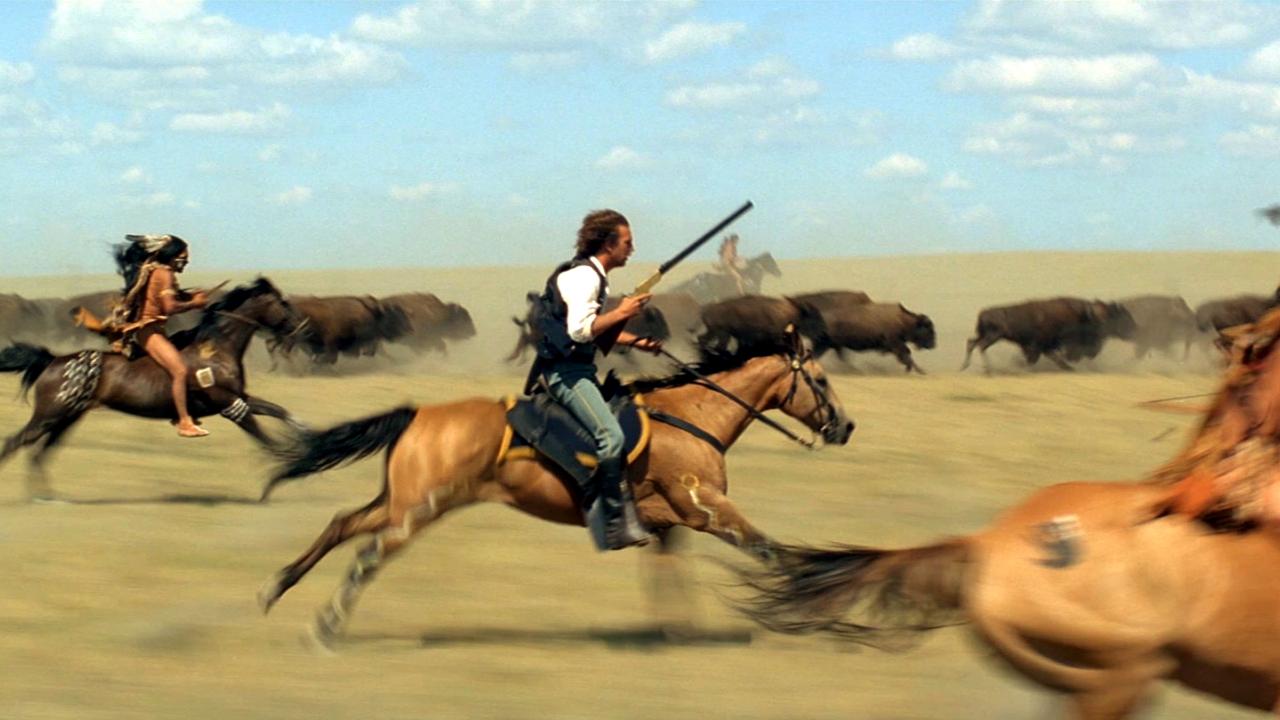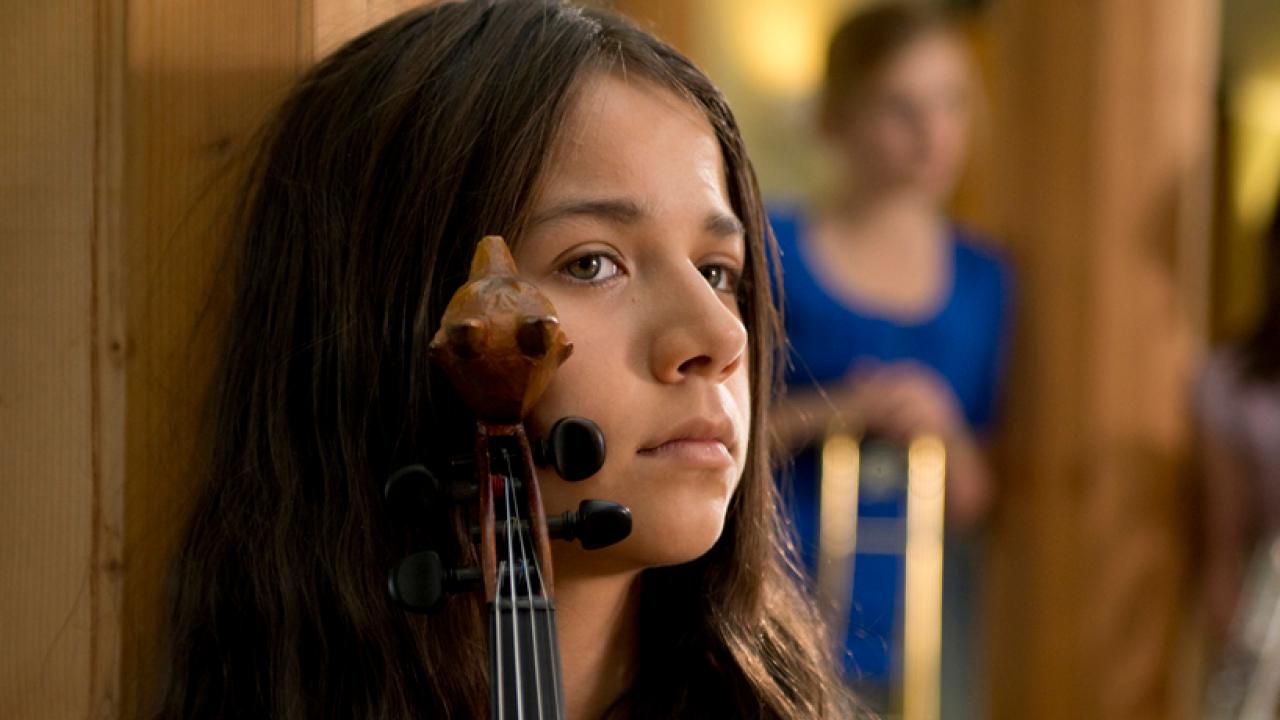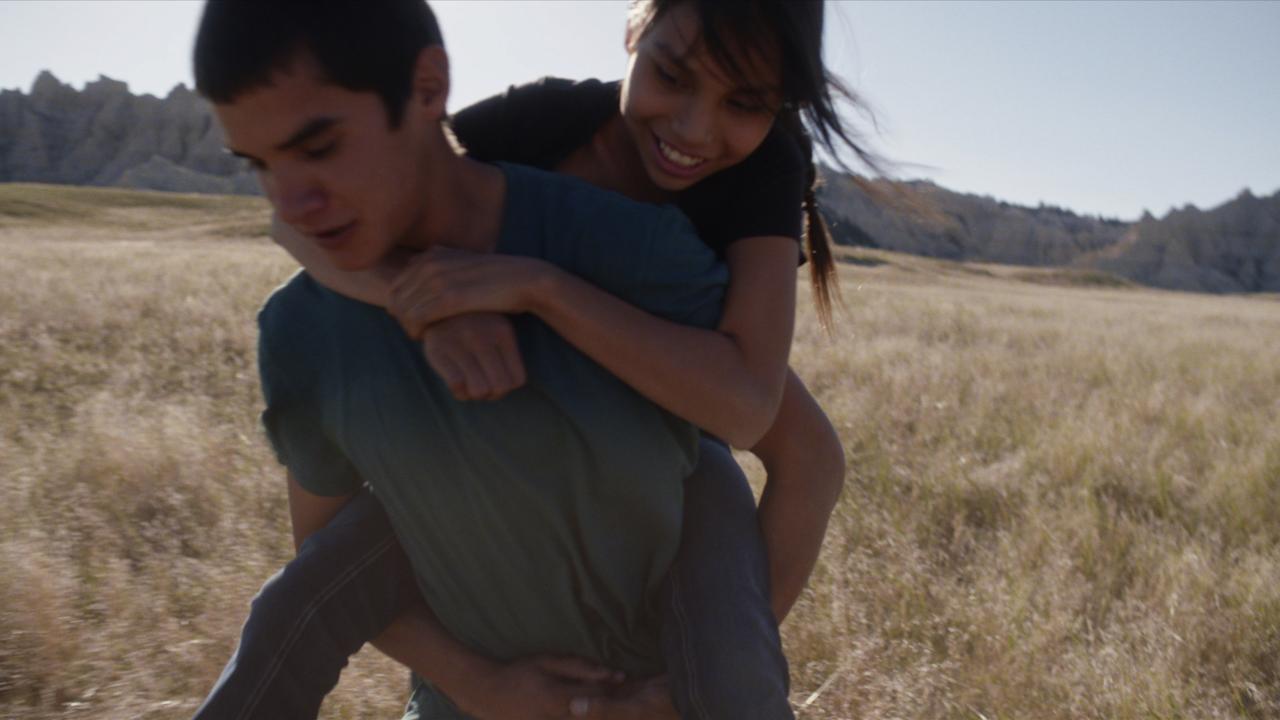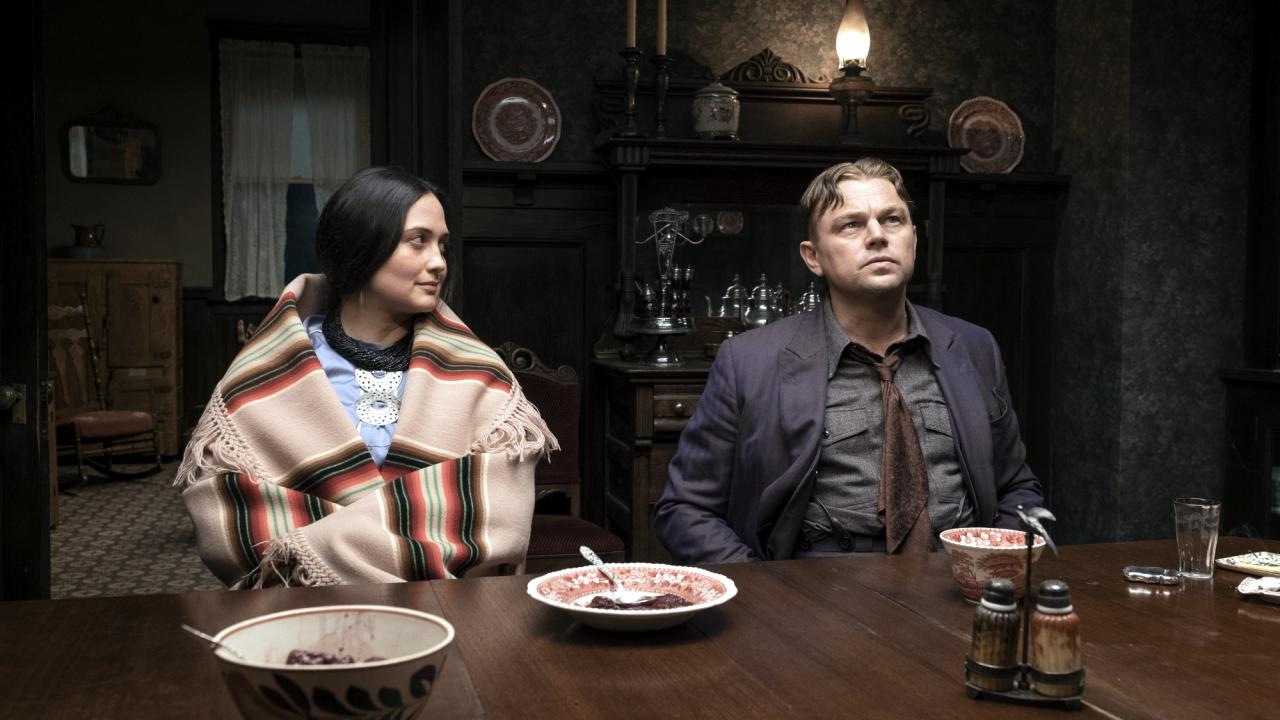Kategorie: Filmbesprechung
"Dances with Wolves"
Dances with Wolves
Union Army lieutenant John J. Dunbar travels to the American frontier to find a military post and encounters a group of Lakota, from whom he learns their language and customs. Kevin Costner’s popular Western epic hit the cinemas thirty years ago.
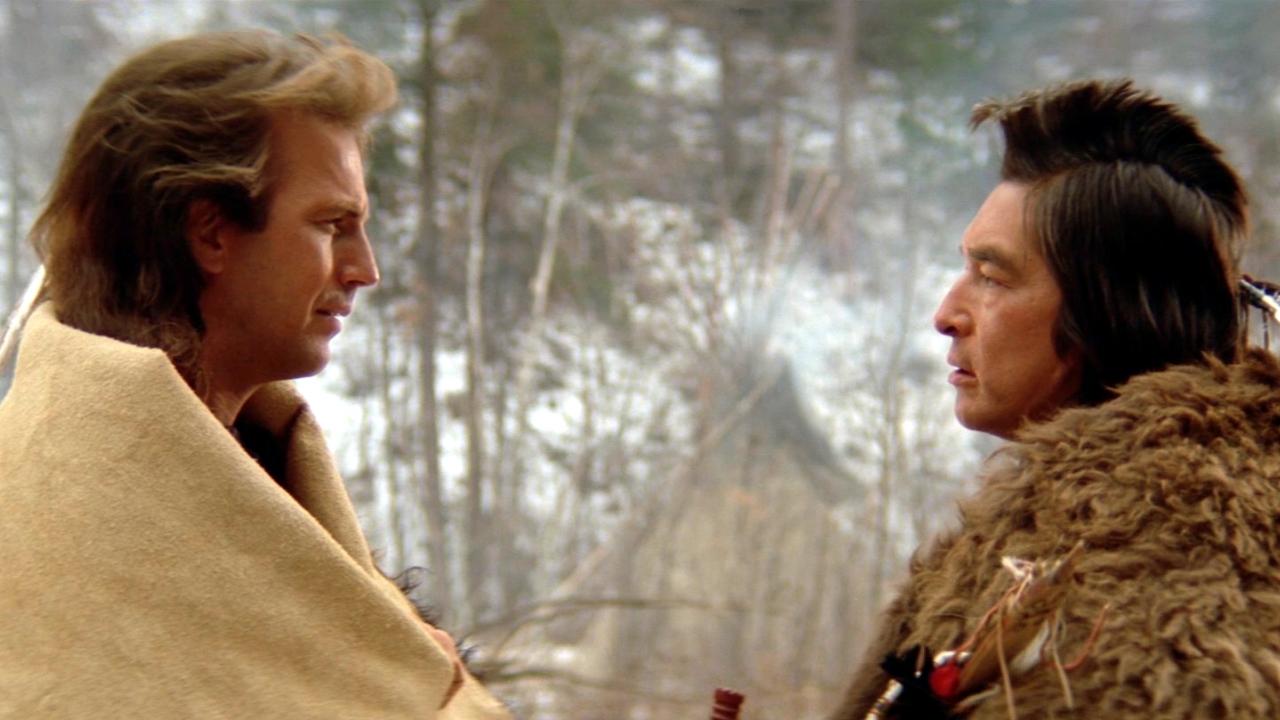
Unterrichtsfächer
Thema
When "Dances with Wolves" was released in the cinemas in 1990, it immediately occupied a special place in American cinema. Not just because the Zum Inhalt: Western practically no longer had any significance as a Hollywood Zum Inhalt: genre, but also because it showed Native Americans, who had usually had to accept the roles of antagonists, from a different perspective. In his debut as a director, Kevin Costner plays a lieutenant from the Union Army in the American Civil War in 1863, who volunteers to man a remote outpost on the frontier, the border between the Euro-Americans’ settlement areas and the territories of the Native Americans, which was moving constantly westward. Left to fend for himself, he befriends a Lakota tribe and eventually is adopted into their ranks.
New Accents
"Dances with Wolves" is an elegiac late Western that not only lingers on landscape panoramas but also breaks with the accepted norms of the genre in the quest for new images and new accents. It skillfully weaves in stereotypes to grab the viewer’s sympathies. When Lieutenant John Dunbar arrives on his own at the isolated outpost, he has no intention or ambition of getting to know the Lakota living in the region. All he wants is to do his job and have a quiet life – and that also means keeping your distance from the indigenous population, which has a reputation for thievery. Accordingly, the first encounters between Dunbar and the Lakota are marked by mutual suspicion. While he arouses their curiosity because he does not behave like all the other "Whites" and appears to have struck up a friendship with a wolf, Dunbar is impressed by the character and appearance of the Native Americans. After he saves the life of Stands With a Fist, the White adopted daughter of the tribe’s medicine man, he begins to earn their respect. The more Dunbar proves himself, for example by telling them of a migrating herd of buffalo and fighting on the side of the Lakota in a battle with the rival Pawnee tribe, the more he becomes an accepted part of the Lakota community. He learns their language and gradually distances himself from his military background – until he must finally decide which he belongs to.
Seeking Authenticity – Leaving Time for Observation
What is striking about "Dances with Wolves" is the clear intention of giving the Lakota a face and a voice. They no longer appear simply as antagonists but are depicted as independent people with an identity of their own. The filmmakers deliberately and consciously avoided what’s known as "redfacing" – all actors playing Lakota have indigenous roots. Furthermore, audiences were treated to numerous lengthy subtitled dialogues in the Lakota language, which was unheard of in previous Hollywood movies.
It is in this context that the Special Edition, which was approximately one hour longer and was released a year later, also in some German theaters, and subsequently released on television, acquired its special significance. Whereby the dramaturgy of the original, which was already three hours long, had to be tightened for the mass market, the longer version takes time for digressions, detours and observations. It lingers for longer on characters and makes the Lakota culture more tangible. In contrast to the original version, it also includes a gruesome Zum Inhalt: scene that sticks out in the otherwise positive characterization of the Lakota and causes consternation both in Dunbar and the audience.
Different Approach – Same Stereotypes
The portrayal of Native Americans in Costner’s film sparked a range of reactions. While some people on the indigenous side welcomes this departure from the old stereotypes – and Kevin Costner was a made an honorary member of the Rosebud Sioux Tribal Nation for his "outstanding portrayal of the Lakota Sioux" – others alleged that the film was not historically accurate, accusing the film of telling the story of a "White Knight" and ultimately replacing old clichés with new. There is evidence to support both arguments. On the one hand, "Dances with Wolves" is the polar opposite of the classic Western and paints a hugely sympathetic picture of the indigenous population. This however, despite the best of intention, merely leads to a shifting of the stereotypes. In general, the Lakota characters in the film are level-headed, honorable, decent and dignified and their village life features a strong sense of community. The Lakotas’ rivals, the Pawnee, however, are depicted along the usual stereotypical lines: their war-painted faces make them appear dangerous, alien and anonymous – and their ambush makes them appear perfidious to boot. They are given the same unpopular role of the invader, just like the "Indians" in classic westerns.
Once Upon a Time in the West
Despite its best efforts to remain authentic, Dances with Wolves succumbs to the temptation of romanticization. On the one hand, this is down to the plot, which is based on the love story between Dunbar and Stands on a Fist; on the other hand, it is down to an idealized view of nature, which is reinforced by the evocative film score (Glossar: Zum Inhalt: Filmmusik). The pictures and Zum Inhalt: plot express a yearning for a time of innocence, for a life in harmony with untouched nature, for freedom and adventure, for true solidarity, for honor and decency. This is why the Lakota have such a fascinating effect on the inwardly and outwardly lonely John Dunbar. Their way of life not only differs fundamentally from that of the White settlers, rather it is dramatized in such a way that it represents the polar opposite. Perhaps this is exactly why Dances with Wolves still works so well: because it still dreams of an ideal world. This apparently ideal world is threatened by the people who regard themselves as civilized yet prove themselves to be the true Barbarians: the White soldiers and settlers who use violent means to grasp whatever they want, who kill animals for fun, have no respect for nature and consider ways of life that are close to nature, such as that of the Lakota, inferior.
The film‘s closing text slides (Glossar: Zum Inhalt: Insert) tell of the disappearance of the Lakota culture. It is framed as an appeal but the words have no real relevance to the present. Above all, they mourn an idealized cliché of Native Americans and the "Wild West".
"Dances with Wolves" available as VoD at amazon, Google Play and iTunes.

